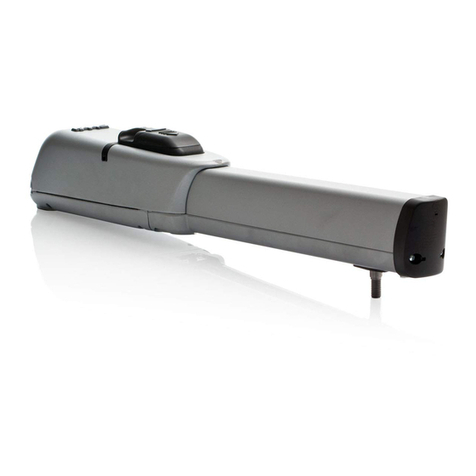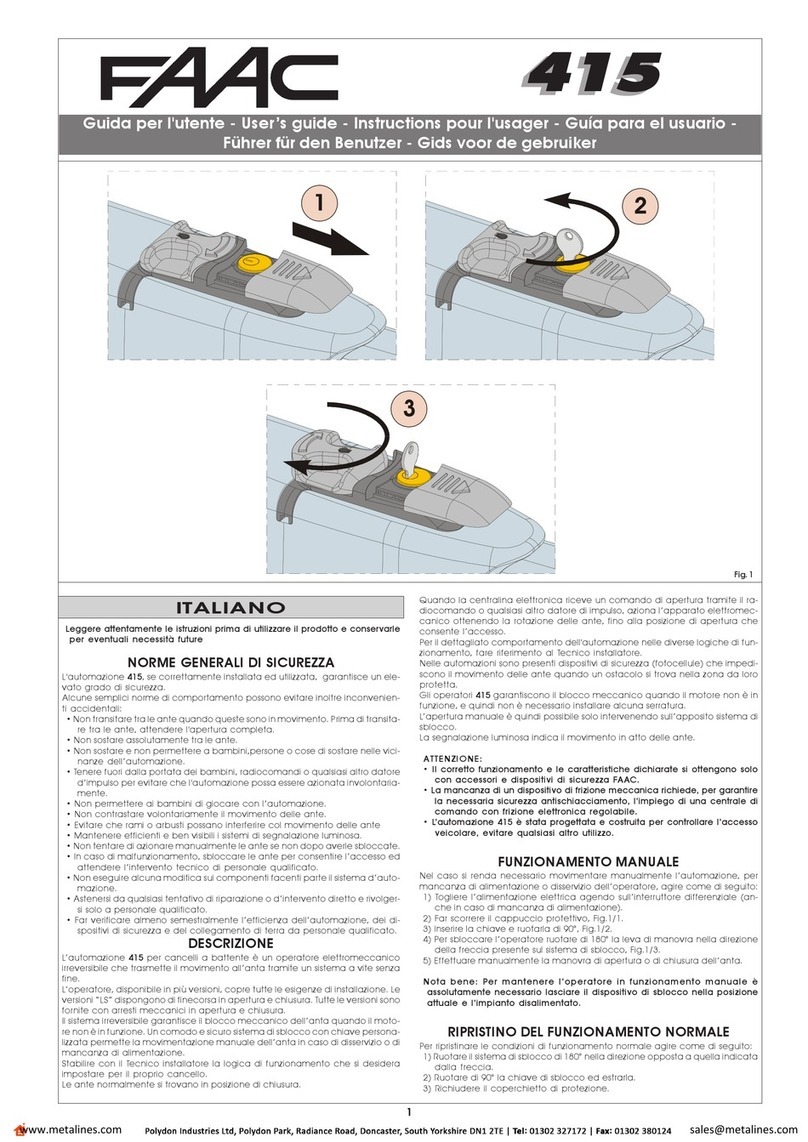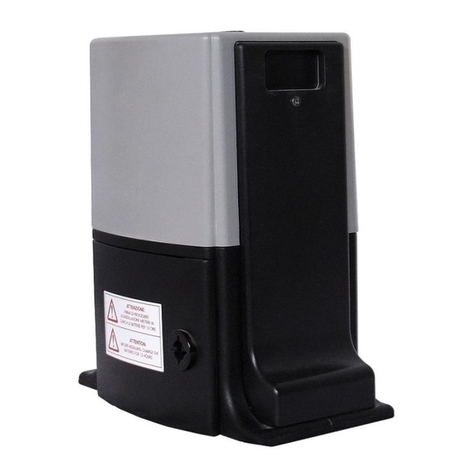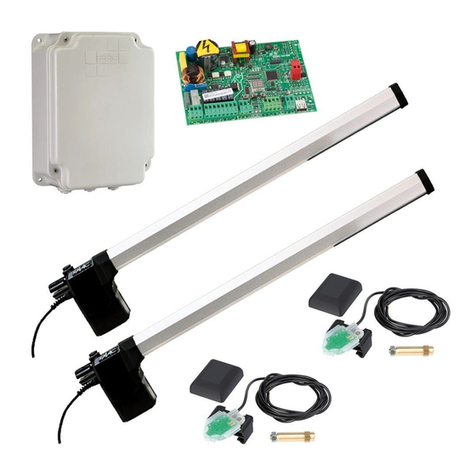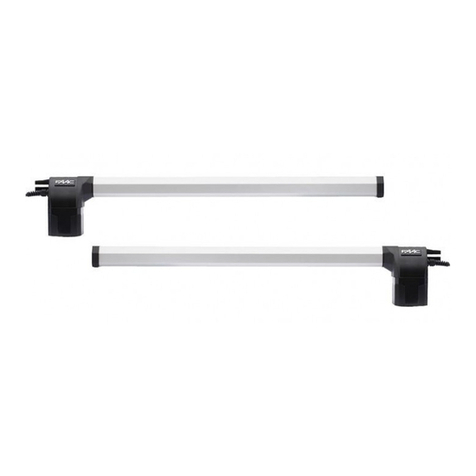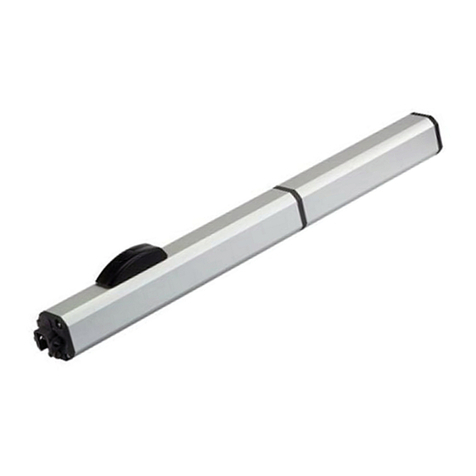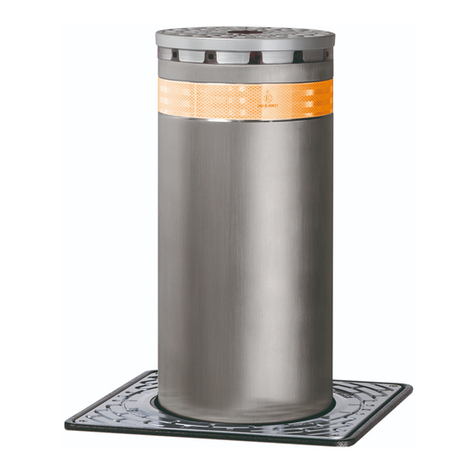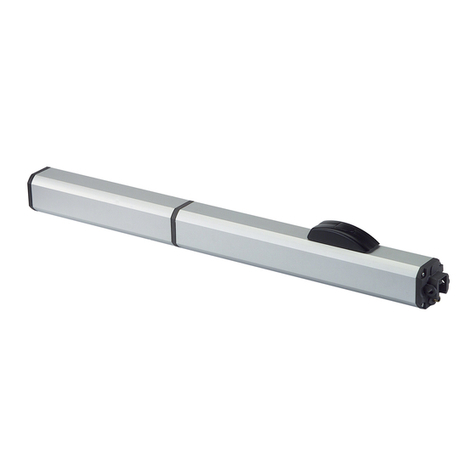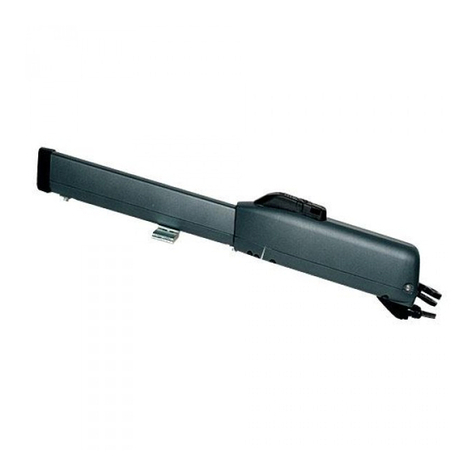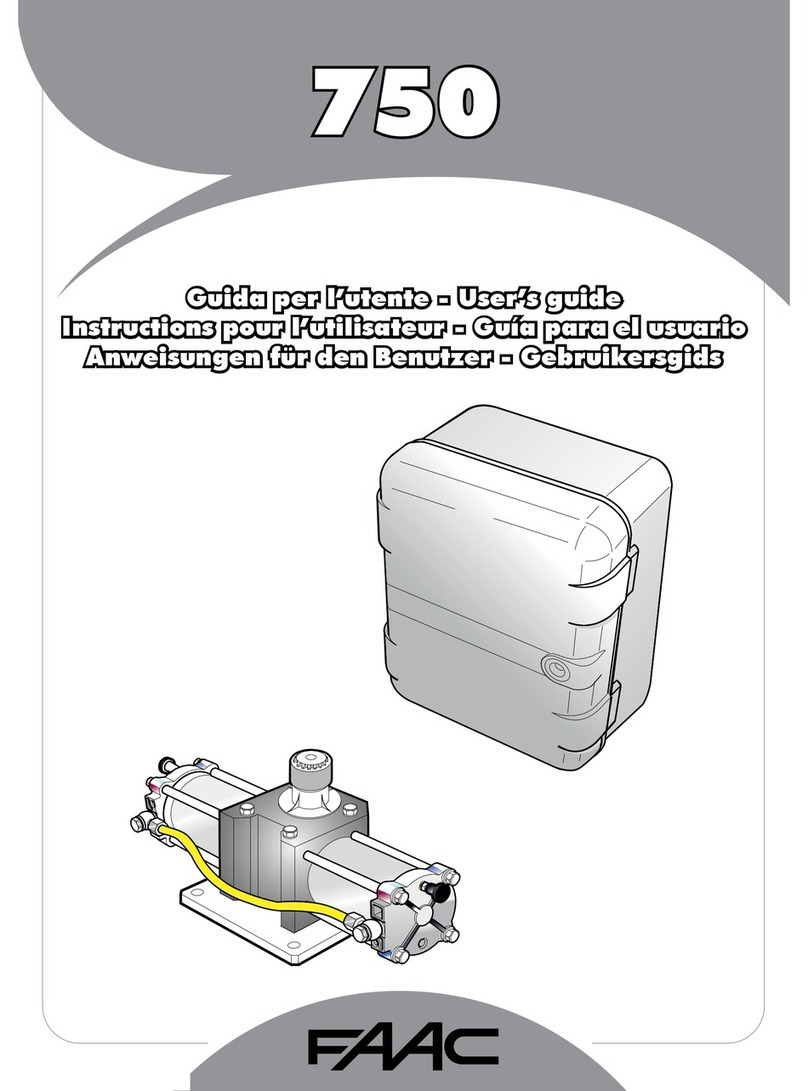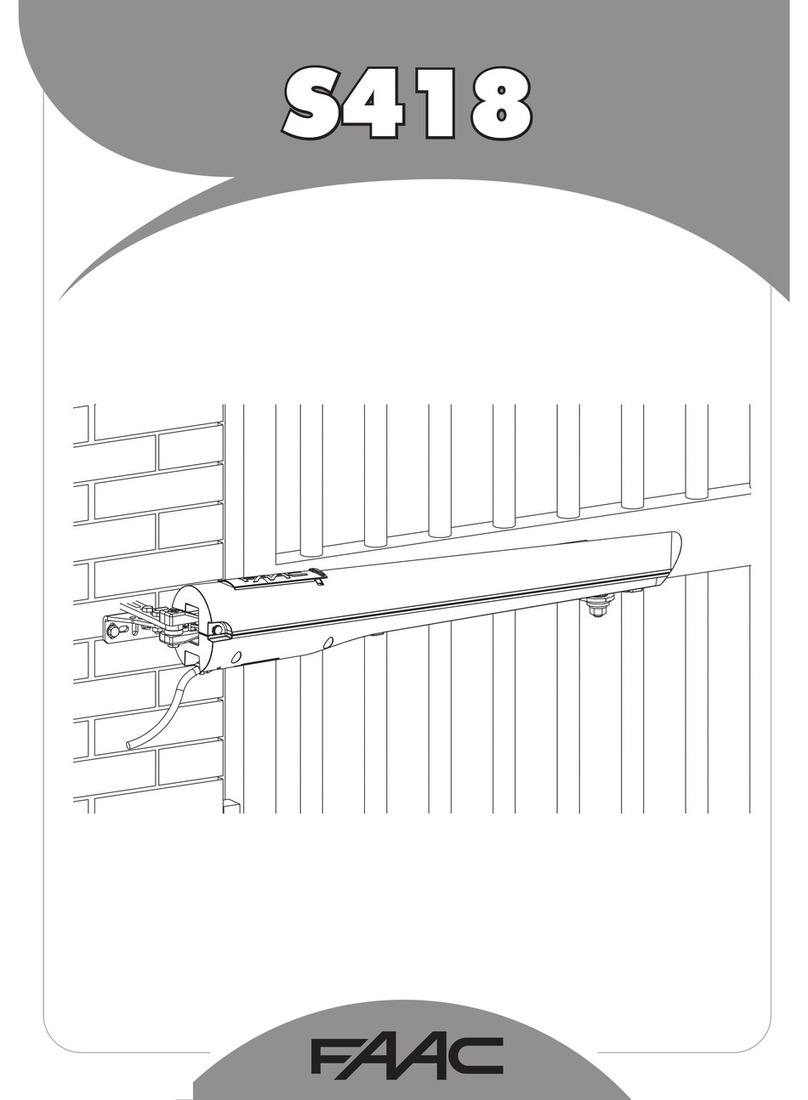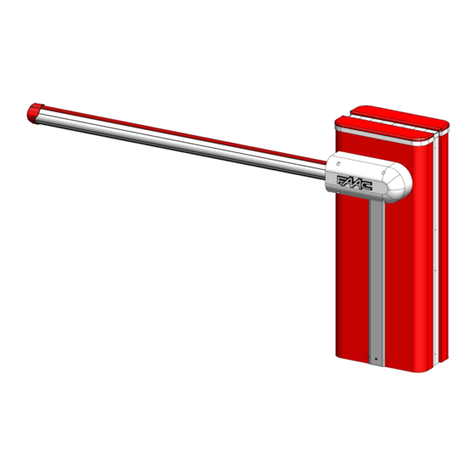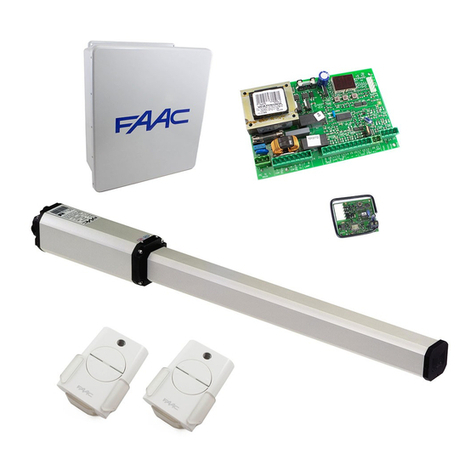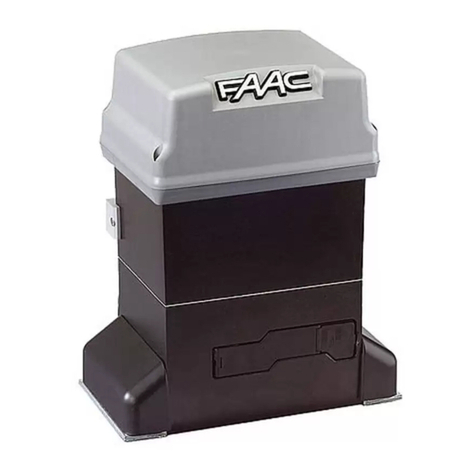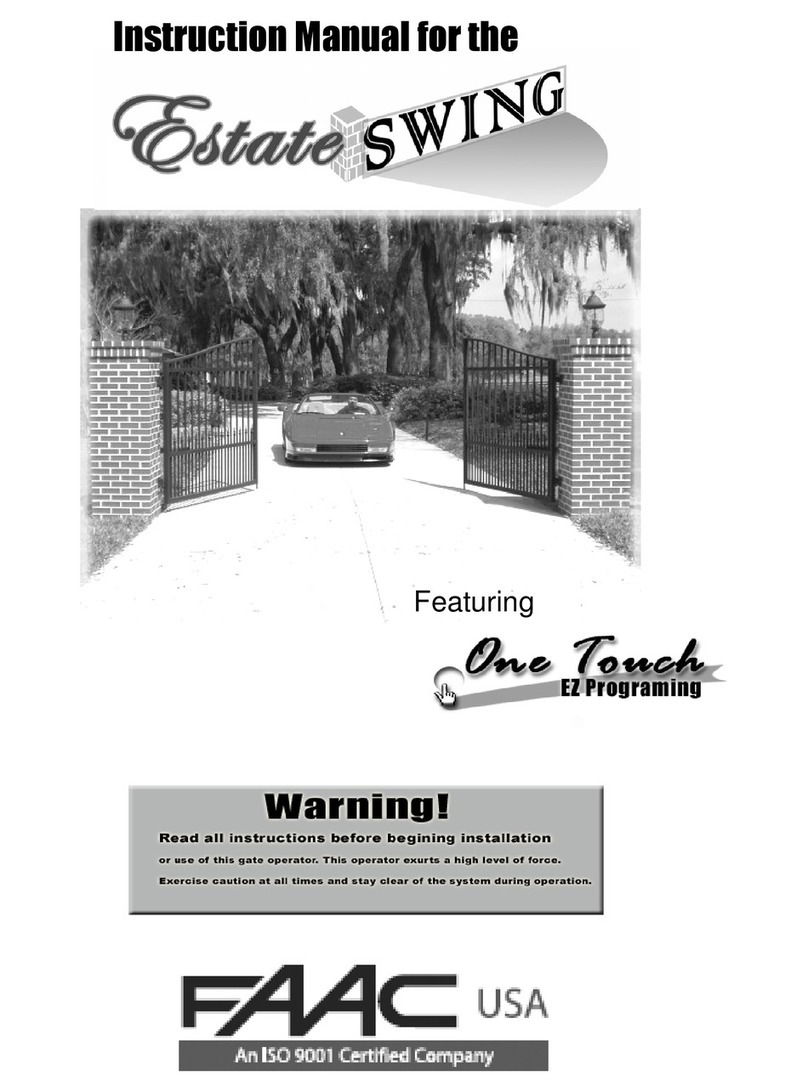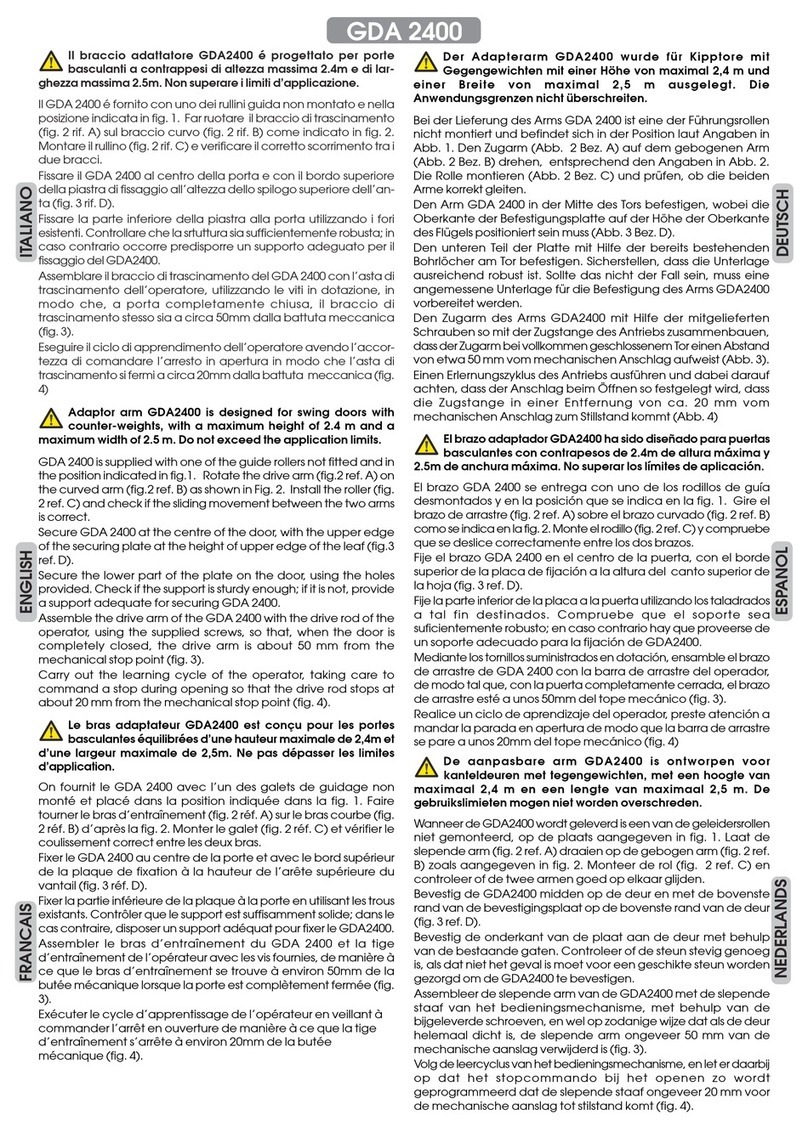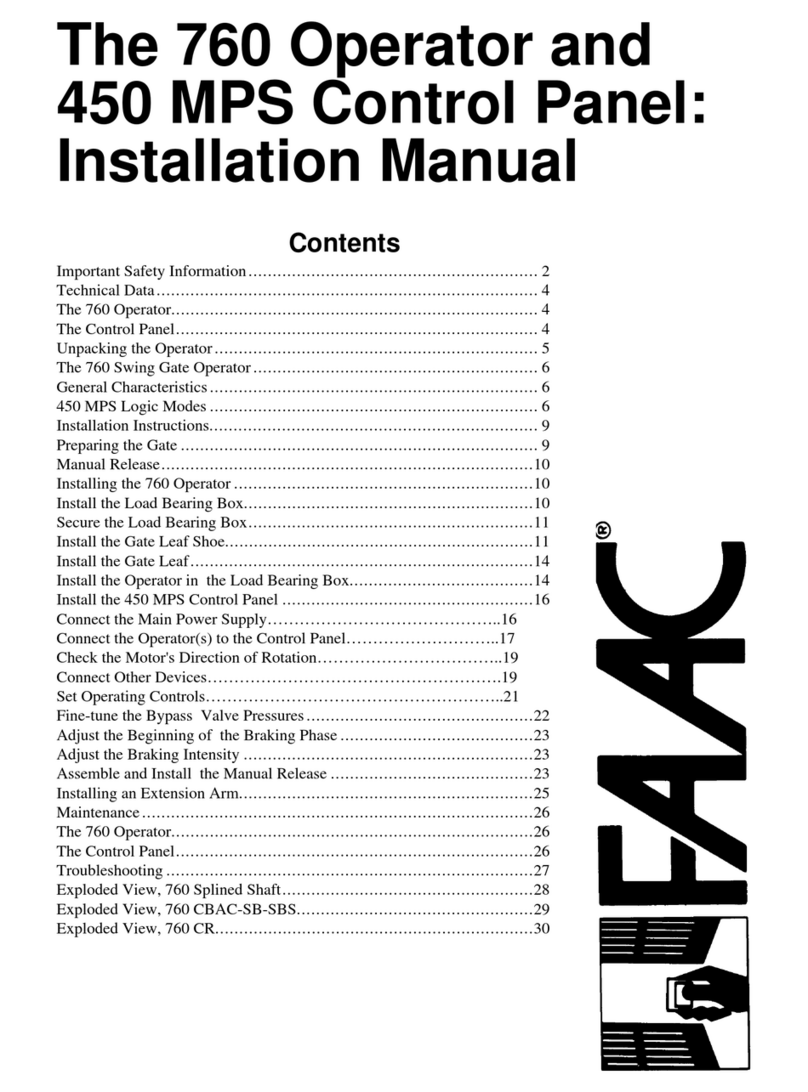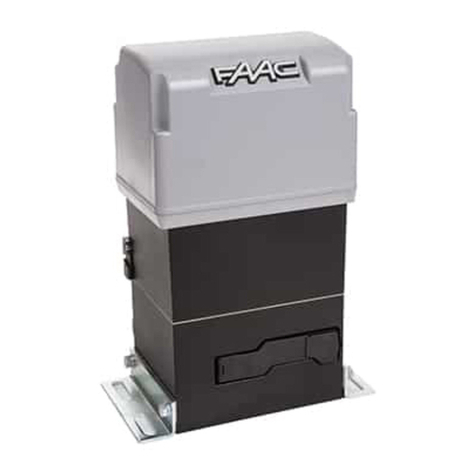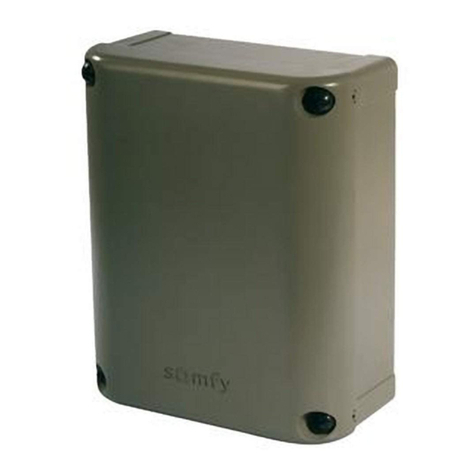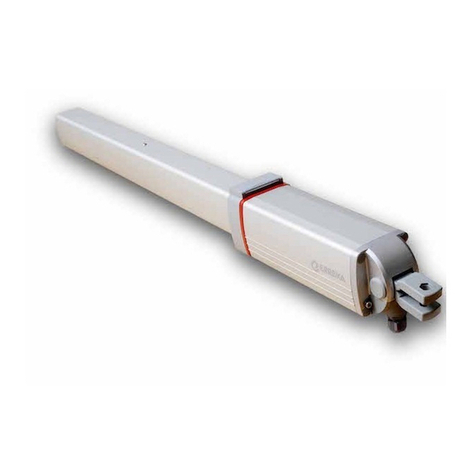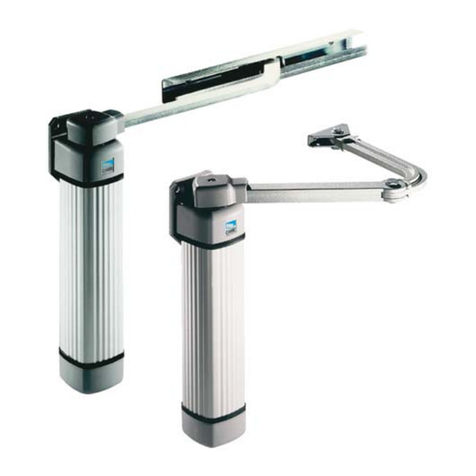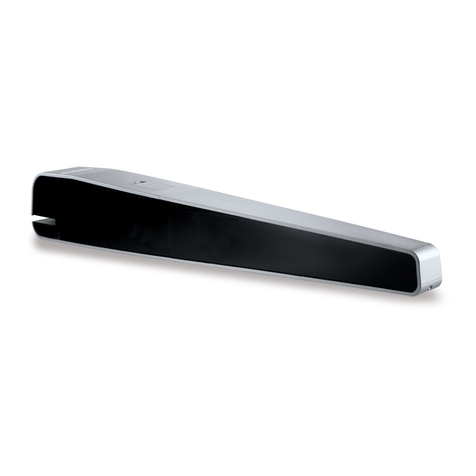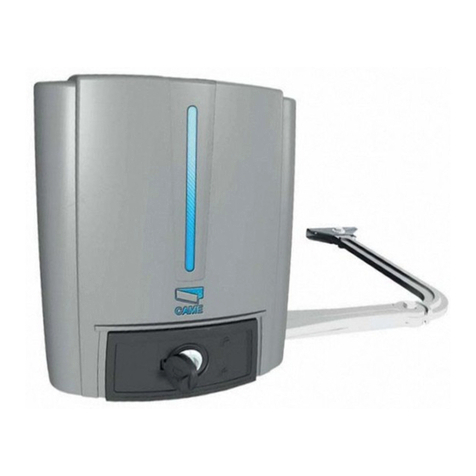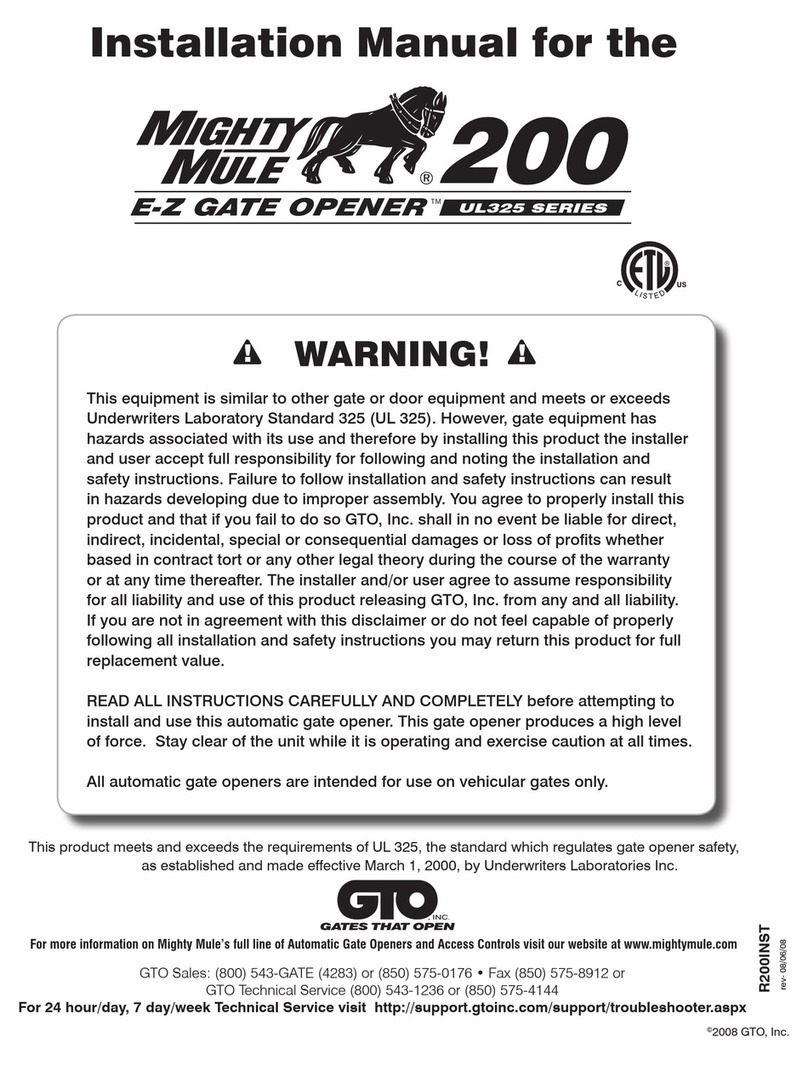10
EC DECLARATION OF CONFORMITY FOR MACHINES
(DIRECTIVE 98/37/EC)
Manufacturer: FAAC S.p.A.
Address: Via Benini, 1 - 40069 Zola Predosa BOLOGNA - ITALY
Declares that: The operator mod. 844 R Reversible
• is built to be integrated into a machine or to be assembled with other machinery to create a machine under
the provisions of Directive 98/37/EC;
• conforms to the essential safety requirements of the following EEC directives:
73/23/EEC and subsequent amendment 93/68/EEC.
89/336/EEC and subsequent amendment 92/31/EEC and 93/68/EEC
and also declares that it is prohibited to put into service the machinery until the machine in which it will be
integrated or of which it will become a component has been identified and declared as conforming to the
conditions of Directive 98/37/EC.
Bologna, 01 January 2005
1) ATTENTION! To ensure the safety of people, it is important that you read
all the following instructions. Incorrect installation or incorrect use of the
product could cause serious harm to people.
2) Carefully read the instructions before beginning to install the product.
3) Do not leavepackingmaterials(plastic,polystyrene,etc.) within reachof
children as such materials are potential sources of danger.
4) Store these instructions for future reference.
5) This product was designed and built strictly for the use indicated in this
documentation. Any other use, not expressly indicated here, could
compromise the good condition/operation of the product and/or be a
sourceofdanger.
6) FAACdeclinesallliabilitycausedby improper use or use other thanthat for
whichthe automatedsystem wasintended.
7) Do not install the equipment in an explosive atmosphere: the presence of
inflammablegas or fumes is a seriousdanger to safety.
8) Themechanical partsmust conform tothe provisions of Standards EN 12604
andEN 12605.
For non-EU countries, to obtain an adequate level of safety, the Standards
mentionedabovemust be observed,inaddition tonationallegal regulations.
9) FAAC is not responsible for failure to observe Good Technique in the
constructionof the closing elementsto bemotorised, or forany deformation
thatmay occur duringuse.
10) The installation must conform toStandards EN 12453 and EN12445.
For non-EU countries, to obtain an adequate levelof safety, the Standards
mentionedabovemust be observed,inaddition tonationallegal regulations.
11) Before attempting any job on the system, cut out electrical power .
12) The mains power supply of theautomated system must befitted with an all-
pole switch with contact opening distance of 3mm or greater. Use of a 6A
thermal breaker with all-pole circuit break is recommended.
13) Makesure thata differential switchwith threshold of0.03 A isfitted upstream
ofthe system.
14) Make sure that theearthing system is perfectlyconstructed, and connect
metal parts of the means of the closureto it.
15) The safety devices(EN 12978 standard) protectany danger areasagainst
mechanical movement Risks, such as crushing, dragging, and shearing.
16) Use of at least one indicator-light (e.g. FAACLIGHT ) is recommended for
every system, as well as a warning sign adequately secured to the frame
structure, in addition to the devices mentioned at point “15”.
17) FAAC declines all liability as concerns safety and efficient operation of
theautomated system, if system components not producedby FAAC are
used.
18) For maintenance, strictly use original parts by FAAC.
19) Do not in any way modify the components of the automated system.
20) The installer shall supply all information concerning manual operation of
the system in case of an emergency, and shall hand over to the user the
warningshandbook supplied with the product.
21) Donot allowchildren oradults to staynear the product while itis operating.
22) Keep remote controls or other pulse generators away from children, to
prevent the automated system from being activated involuntarily.
23) Transit through the leaves is allowed only when the gate is fully open.
24) The user must not attempt any kind of repair or direct action whatever
and contact qualified personnel only.
25) Maintenance: check at least every6 months the efficiency ofthe system,
particularly the efficiency of the safety devices (including, where
foreseen, the operator thrust force) and of the release devices.
26) Anything not expressly specified in these instructions is not permitted.
WARNINGS FOR THE INSTALLER
GENERAL SAFETY OBLIGATIONS

